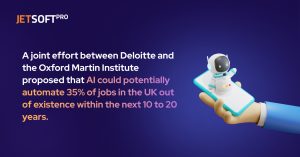To comprehend the current state of healthcare data, it is essential to trace its evolution. From handwritten patient records to the digitization of health information, the healthcare sector has witnessed a significant transformation. This section explores the historical perspective of data collection in healthcare, highlighting the challenges faced during the transition.
The advent of Electronic Health Records (EHRs) has played a pivotal role in shaping the healthcare data landscape. This subsection delves into the significance of EHRs, their implementation, and the advantages they bring in terms of accessibility, accuracy, and continuity of patient information.
While the influx of data offers unprecedented opportunities, it also presents challenges in managing and extracting meaningful insights. This part discusses the complexities involved in handling massive healthcare datasets, touching upon issues of interoperability, data security, and the need for sophisticated analytical tools.

AI in Healthcare: A Technological Revolution
Before delving into its applications, a brief introduction to AI and its subsets – machine learning and deep learning – lays the foundation. This section provides clarity on the technological underpinnings of AI and sets the stage for its transformative applications in healthcare.
Key Applications of AI in Healthcare
- Predictive Analytics for Disease Prevention
AI’s predictive analytics capabilities empower healthcare professionals to anticipate and prevent diseases. This subsection elucidates how AI models analyze historical data to identify patterns, enabling early intervention and personalized preventive measures.
In healthcare, AI analyzes diverse datasets, including patient records and lifestyle factors, to identify patterns indicating potential health risks. Predictive analytics aids early disease detection, enabling swift interventions like medical treatments or lifestyle adjustments. AI tailors preventive measures based on individual characteristics, optimizing actions for unique health risks. The seamless integration of predictive analytics delivers actionable insights for preventive care, fostering a patient-centric approach in healthcare.
- Image and Signal Processing for Diagnostics
The application of AI in image and signal processing has revolutionized diagnostic procedures. Image and Signal Processing, powered by Artificial Intelligence (AI), is transforming healthcare diagnostics. This advanced technology revolutionizes how medical professionals interpret complex data, enhancing diagnostic accuracy and efficiency.
- Natural Language Processing (NLP) for Mining Unstructured Data
Unstructured data, often found in clinical notes and medical literature, holds valuable insights. NLP, a subset of AI, enables the extraction and analysis of unstructured data, contributing to a more comprehensive understanding of patient health.
Statistical NLP relies on machine learning, specifically deep learning neural networks, leading to a recent surge in recognition accuracy. This method necessitates a substantial ‘corpus’ or collection of language from which the system learns.
In the healthcare domain, NLP is predominantly applied to the generation, comprehension, and categorization of clinical documentation and published research. NLP systems can analyze unstructured clinical notes regarding patients, generate reports (such as those for radiology examinations), transcribe patient interactions, and facilitate conversational AI.
4. Robotic process automation

